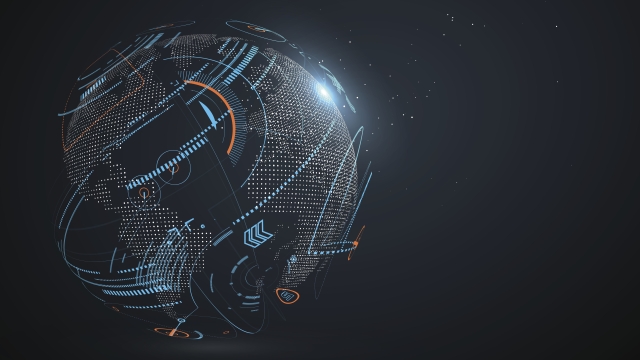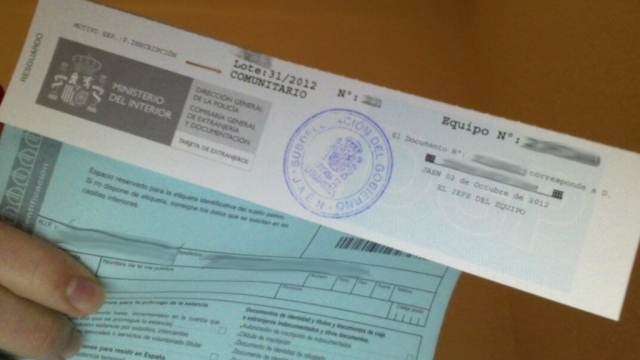/futuristic-globalization-interface--638644668-5af5f9d71d64040036e8e4c0.jpg)
Welcome to the brave new world of deepfake technology, where reality and illusion often intertwine, giving rise to a myriad of implications. In recent years, the advancements in deepfake technology have reached unprecedented levels, allowing for the creation of highly convincing fake videos and images that can deceive even the most discerning eye. As we venture further into this technological landscape, it becomes increasingly important to unravel the intricate web of illusions that deepfakes present and comprehend the potential consequences they hold for society.
Deepfake technology, at its core, revolves around the manipulation and synthesis of visual content using artificial intelligence algorithms. By employing techniques such as machine learning and neural networks, these algorithms can seamlessly swap faces, alter expressions, and even synchronize movements to create realistic videos that appear genuine. While initially popularized for creating entertaining and amusing content, the implications of deepfake technology extend far beyond harmless fun.
One of the most pressing concerns lies in the realm of misinformation and its potential to undermine truth in our increasingly digital society. With the ability to manipulate audio and video to an unprecedented degree, deepfakes can be weaponized to spread false narratives, incite social unrest, or even manipulate public opinion. The ease with which anyone can create and disseminate these realistic fakes raises questions about the veracity of the information we encounter online and challenges the very notion of trust in the digital age.
As we delve deeper into the intricacies of deepfake technology, it is crucial to explore the implications it has for privacy and consent. Individuals’ faces can be effortlessly superimposed onto explicit content or placed in compromising situations without their consent, violating their privacy and potentially causing irreparable harm. The rise of deepfake pornography, in particular, has raised concerns about the non-consensual use of individuals’ images and the blurring of boundaries between reality and exploitation.
In this ever-evolving landscape, the consequences of deepfake technology cannot be ignored. As we traverse this new frontier, it is crucial to strike a balance between enjoying the creative possibilities it offers and mitigating its potential harm. By understanding the illusions created by deepfakes and staying vigilant against their misuse, we can navigate this brave new world with caution and responsibility.
Understanding Deepfake Technology
Deepfake technology is a rapidly evolving field that merges artificial intelligence with multimedia manipulation. It involves the use of sophisticated algorithms and neural networks to create realistic and often deceptive fake videos and images. By altering existing footage or synthesizing new content, deepfakes have the ability to convincingly place someone’s face onto another person’s body, make individuals say things they never actually said, or even bring back deceased individuals in a seemingly authentic manner.
The implications of deepfake technology are far-reaching and have raised concerns about trust, privacy, and the spread of misinformation. With the increasing availability of user-friendly tools and the proliferation of social media platforms, deepfakes can easily go viral, causing reputational damage, political unrest, and societal divisions. It is becoming increasingly difficult to discern reality from fiction, posing significant challenges for individuals, organizations, and society as a whole.
Moreover, deepfakes have the potential to undermine trust in visual media, making it harder to rely on video evidence as indisputable proof. This poses a threat to the integrity of journalism, justice systems, and democratic processes. As the technology advances, the ability to detect deepfakes is becoming more challenging, creating a constant race between creators and detectors.
Overall, deepfake technology poses a double-edged sword. While it can be used for harmless entertainment or creative purposes, its misuse can have serious consequences. It is essential for individuals, policymakers, and technology companies to stay vigilant and develop robust methods to detect and combat the growing threat of deepfake technology.
Deepfake
The Growing Influence of Deepfakes
Deepfake technology has rapidly gained popularity and is now leaving its mark on various aspects of our lives. From entertainment to politics, this groundbreaking innovation has the power to reshape our perceptions and create increasingly convincing illusions.
One area where deepfakes have made a significant impact is the world of entertainment. With the ability to seamlessly blend the likeness of one person onto another’s body, filmmakers and content creators can now bring deceased actors back to life or even cast performers who may not physically resemble their characters. This opens up exciting possibilities for storytelling and allows filmmakers to push the boundaries of creativity.
However, deepfakes are not limited to the realm of entertainment. The technology’s influence extends to the political landscape as well. In an era where information is easily manipulated and social media plays a prominent role in shaping public opinion, deepfakes have the potential to disrupt trust and sow confusion. Political figures can become victims of manipulated videos, making it increasingly challenging to differentiate fact from fiction.
Outside of entertainment and politics, the influence of deepfakes can also be felt in the realm of cybersecurity. As the sophistication of this technology continues to grow, so does the potential for misuse. From scams and identity theft to corporate espionage, deepfakes pose significant threats to individuals and organizations alike.
In conclusion, the growing influence of deepfake technology is undeniable. Its impact spans across entertainment, politics, and cybersecurity, presenting both incredible opportunities and undeniable risks. As this technology continues to evolve, it is crucial that we remain vigilant, adapt to mitigate its negative effects, and embrace the positive potential of deepfakes.
The Ethical and Legal Challenges
Deepfake technology raises significant ethical and legal concerns that cannot be ignored. With the ability to manipulate images and videos to create convincing yet fake content, the potential for misuse and harm is alarming.
One of the primary ethical challenges associated with deepfake technology is the erosion of trust. As deepfakes become more sophisticated and indistinguishable from reality, how can we trust the information we see and hear? The ease with which anyone can create and spread deepfakes raises questions about the authenticity of digital media and challenges the notion of evidence itself.
Another ethical concern is the potential for deepfakes to be used for malicious purposes. From political manipulation to revenge porn, the harm caused by circulating false and damaging content is immense. Victims of deepfake attacks can experience severe emotional distress, reputational damage, and even face legal consequences. Safeguarding individuals from such harm becomes crucial in this brave new world of deepfake technology.
From a legal standpoint, deepfakes present a host of challenges. Existing laws may struggle to keep up with this rapidly evolving technology. Issues surrounding privacy, intellectual property rights, and defamation become increasingly complex when manipulated content enters the equation. Determining the responsibility of individuals involved in deepfake creation, distribution, and consumption also poses legal dilemmas that require careful consideration.
In order to tackle these ethical and legal challenges, a multi-faceted approach is necessary. Collaboration between technology companies, legislators, and law enforcement agencies is crucial to establish guidelines, regulations, and potential penalties for the misuse of deepfake technology. Furthermore, public awareness and education are vital to empower individuals to identify and mitigate the risks associated with deepfakes.
As we navigate this brave new world of deepfake technology, it is imperative that we address the ethical and legal challenges it presents. By doing so, we can strive for a more responsible and secure digital landscape, where trust can be restored and the potential harm caused by deepfakes can be minimized.



